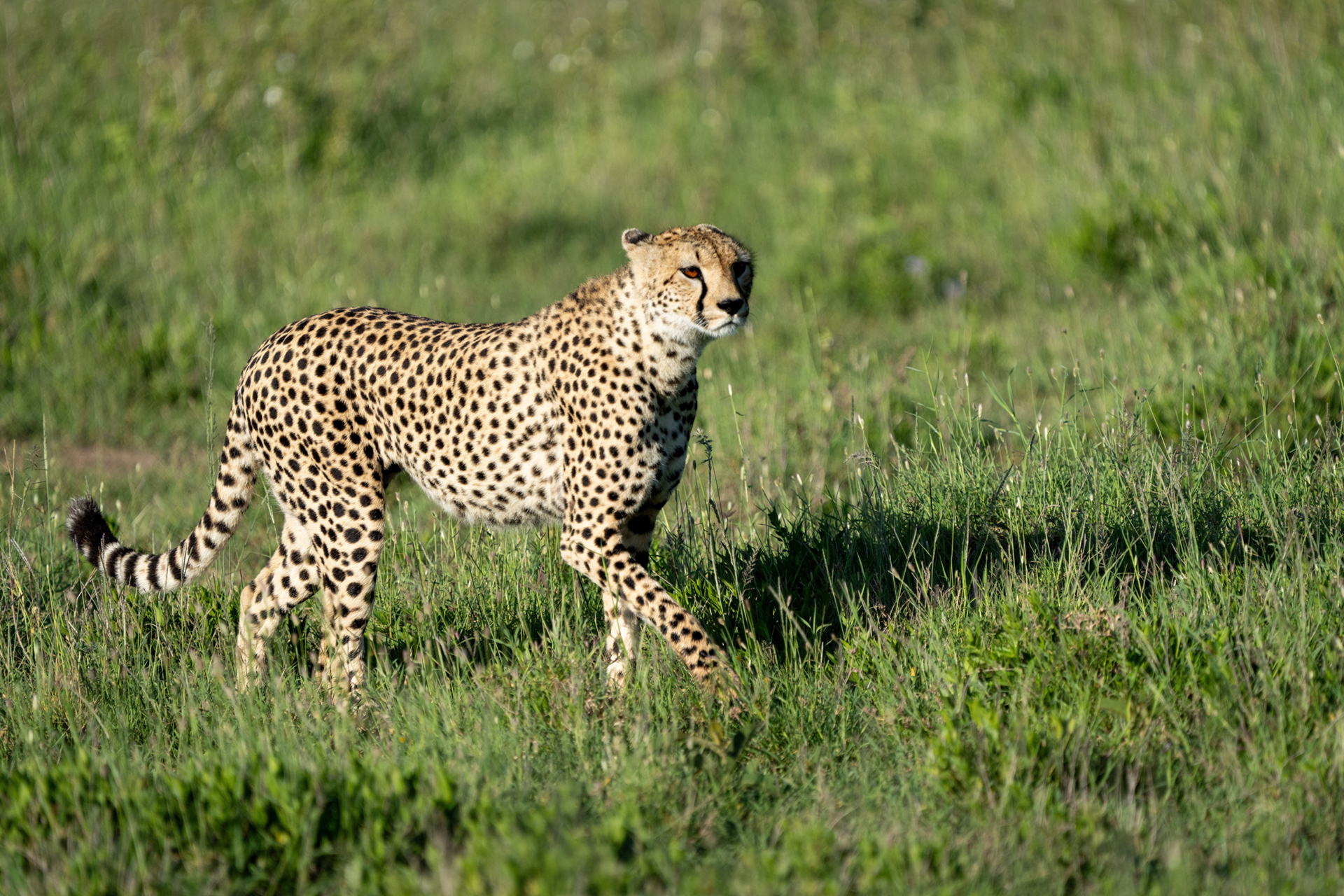
itinerary

July–October Itinerary
Note: In 2025, this itinerary will begin at the Ngorongoro Crater and end in the Serengeti.
Day 1: Arusha, Tanzania
Arrive at Kilimanjaro Airport and transfer to a peaceful country lodge at the base of Mount Meru. Relax amid the ambience of a 1905 colonial farmhouse and lush gardens, surrounded by mature native forest where colobus and Sykes' monkeys play in the trees. If time permits, take a swim in the pool or enjoy a restorative massage in the open-air tent, serenaded by birdsong. As the afternoon wanes, sip a sundowner on the terrace in view of Mount Kilimanjaro before gathering for a welcome dinner this evening.
Days 2–4: East-Central Serengeti—Nat Hab’s Serengeti East Camp
Early this morning, depart for Arusha's domestic airport and our flight to Serengeti National Park. This legendary savanna derives its name from a Maasai word meaning “endless plains,” and the vista of golden grasslands stretching to the horizon under a blue bowl of sky provides an iconic image of East Africa. Meeting our safari vehicles and drivers, we set out on our first wildlife drive. Our destination is our exclusive bush camp surrounded by open range and kopjes—large granite outcrops that dot the plains.
This private camp offers fabulous wildlife viewing in diverse habitats, particularly of the abundant feline predators that live and hunt in this area. It also provides exceptional seclusion away from crowds. From canvas tents shaded by giant acacia trees, survey 360-degree views of wildlife traversing the savanna, with more thrilling encounters in store on game drives.
Days 5-7: Northern Serengeti—Nat Hab's Migration Camp
Flying on to the northern Serengeti, we reach Nat Hab’s private Migration Camp, our base for a three-day immersion in Africa's Great Migration. In accord with the herds’ seasonal movements, we locate our mobile camp in the northern Serengeti from July through October. This deluxe tented outpost rests within one of the main movement corridors for more than 2 million wildebeest, zebra and gazelle that make this annual trek, plus an accompanying cast of predators. Each year, the herds follow an ancient circuit covering 1,800 miles from Kenya’s Maasai Mara to the southern Serengeti and back again. On daily game drives, witness this remarkable spectacle as the enormous herds traverse the savanna while big cats and hyenas steal behind. We may behold stunning scenes of predator-prey interaction as a lion takes down a sick animal or a cheetah snatches an infant. The spectacle can be grim, but it is a wonder to behold. Optional hot air balloon safaris with a champagne breakfast upon landing are also available (additional cost).
The days of heavy canvas hunting camps set for the likes of Roosevelt and Hemingway were nearly over until photo safaris gained popularity in the 1970s, and our secluded camp, with its walk-in canvas tents and crackling campfire, is redolent with that vintage atmosphere. Yet despite our remote location, we enjoy impressive luxuries, including candlelight dinners served on white linen under a canopy of stars.
Day 8: Serengeti / Air & Road Transfer to Ngorongoro Highlands
Make a last Serengeti game drive this morning en route to the airstrip where we meet our flight to Karatu. Upon landing, we make an easy drive into the lush Ngorongoro Highlands, a verdant expanse of wild bush and agricultural land comprising the heart of Tanzania's coffee country. This afternoon, arrive at our elegant lodge where you may wish to take an optional tour of a coffee plantation—this is prime terrain for growing some of Africa’s finest beans in the moisture-laden, high-altitude cloud forest environs. Or, choose to relax in the lush garden setting of our lodge, perhaps enjoying a swim or a massage before dinner.
Day 9: Ngorongoro Crater Safari
Leave very early this morning for one of Africa’s consummate safari experiences: a journey into the massive caldera that is the Ngorongoro Crater. We climb to the rim, then drop down the steep wall to the 100-square-mile crater floor. One of the Seven Natural Wonders of Africa, Ngorongoro Crater is the largest unbroken caldera on Earth—the center of a huge ancient volcano that scientists believe may have been larger than Mount Kilimanjaro. Twelve miles across and 2,000 feet deep, the crater is home to some 30,000 animals that live year-round inside its walls, attracted to its perpetual water sources.
Here in this veritable Eden, a wide variety of wildlife thrives within an ecosystem of abundant resources. Along with many mammals, flocks of pink flamingos cover the soda lakes, while large land birds like ostrich and kory bustard roam the grassy plain. Because of the crater's permanent supply of fresh water, it sustains the densest concentration of wildlife in Africa. Common sightings include elephant, buffalo, hippo, giraffe, zebra, blue wildebeest, eland, gazelle and waterbuck, while lion and hyena are abundant predators. A glimpse of the rare black rhinoceros is a special prize. Late this afternoon, we exit the crater and return to our lodge.
Day 10: School Visit / Arusha / Depart
This morning, we make the easy drive back to Arusha on a tarmac road, passing farms, villages and lively roadside markets en route. In Karatu, we stop at a local primary school supported by Nat Hab’s philanthropy program, where we meet the children and learn about how our tourism dollars contribute to their education, making a tremendous difference to the economically challenged students who attend here. Continue to Arusha, arriving at Ngare Sero Lodge at the base of Mount Meru, where a farewell lunch is served on arrival. Day rooms await in this peaceful setting, offering a chance to relax and refresh before your transfer to Kilimanjaro Airport for international departures this evening.
